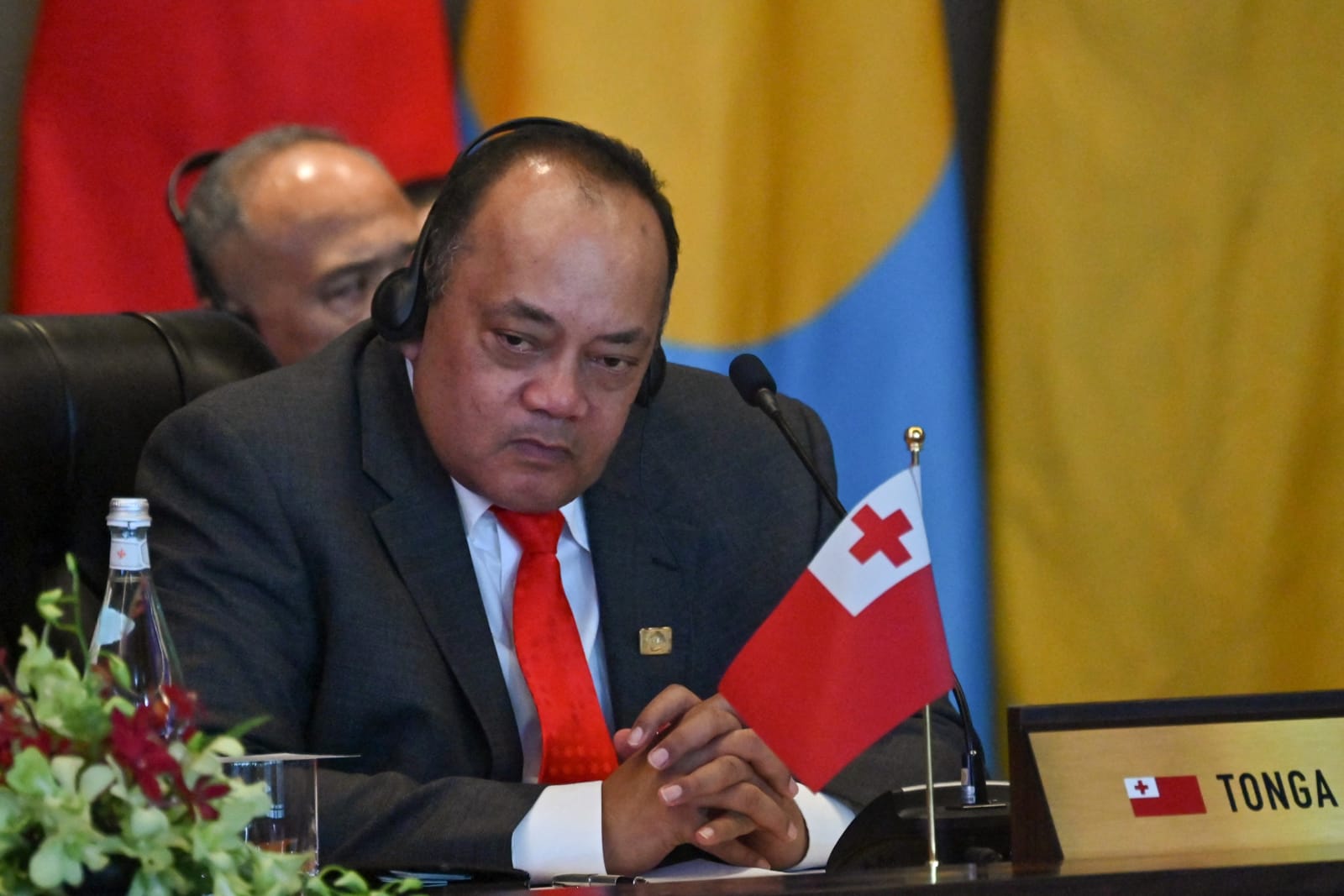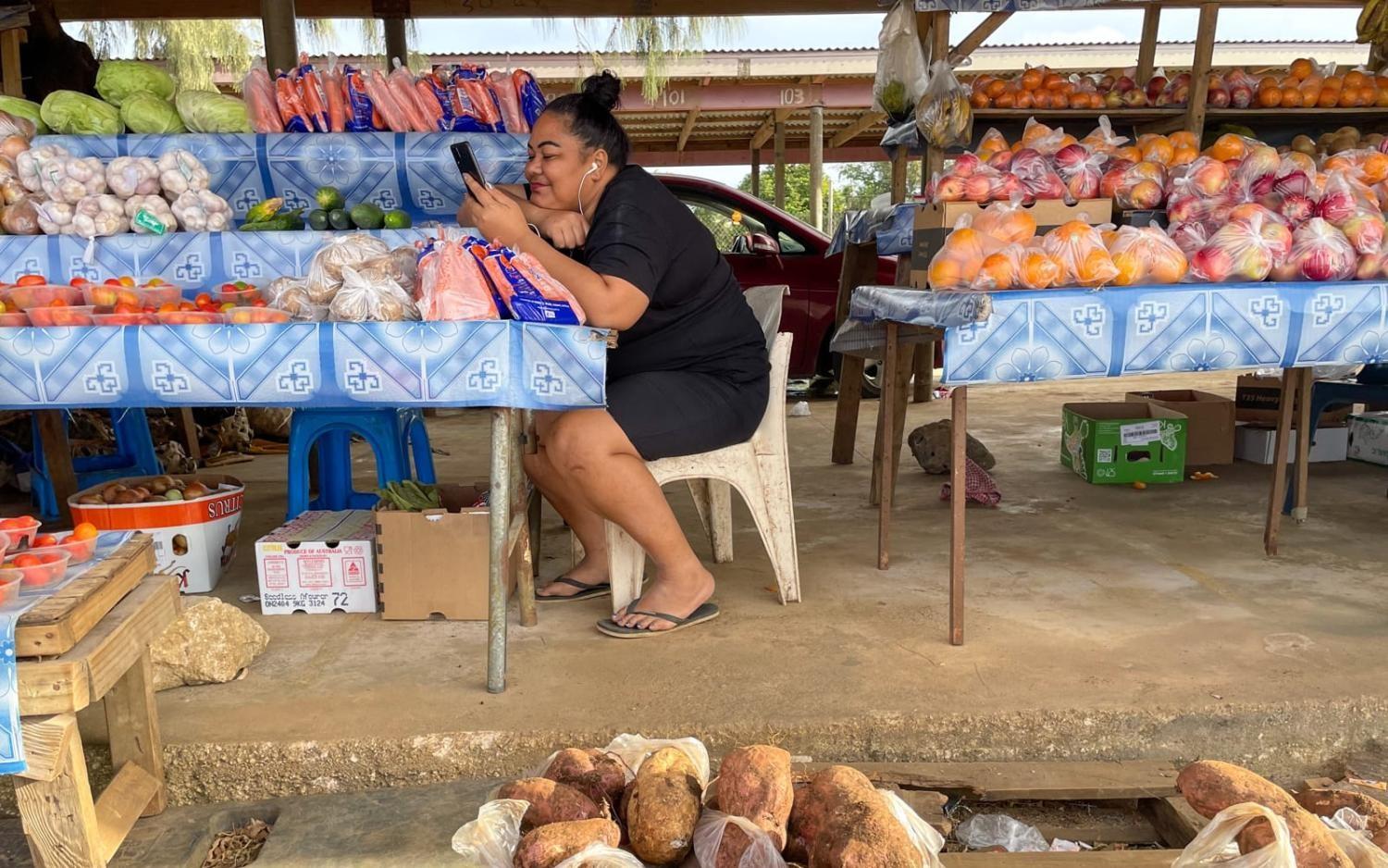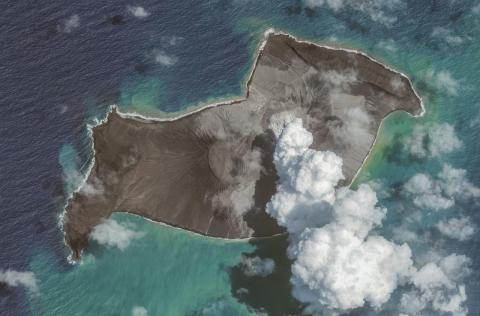Tonga’s debt burden is set to balloon over the next five years as the deadline looms on loans from China. Repayments will see the country’s debt burden rise to among the highest in the world. Only Bhutan, Laos and Djibouti will devote a greater share of national income to servicing bilateral debts this financial year.
Tonga’s government revenue is higher than similarly debt burdened nations. But the scale of the repayments remains staggering. This year, Tonga will spend more on servicing its debts than it will on health.
Roughly 80% of Tonga’s upcoming debt payments will flow to China, as the chart below shows. The small island economy owes Beijing more than US$120 million, a sum roughly equivalent to a quarter of its annual GDP. At its peak, repayments on the debt will consume more than a fifth of the Tongan government’s non-aid revenues.
The bulk of this debt must be repaid by 2028, a settlement deadline that will place considerable strain on government finances. What the Tongan Ministry of Finance describes as upcoming “expenditure rationalisations” is essentially a program of fiscal austerity.
Coming after not only the Covid-19 pandemic but also the Hunga Tonga-Hunga Ha’apai volcanic eruption in 2022, forced austerity will hamper Tonga’s recovery while crowding out much-needed funds for health, education, and climate adaptation.
The situation also carries risks for China, and, potentially, Australia too. In the high likelihood event of a disaster, a debt crisis in Tonga would damage China’s reputation in a region already growing wary of its lending. For Australia, which has provided additional budget support to make Tonga’s repayment plan possible, there are risks around the optics and future overreliance.
Most of Tonga’s external debt originates from a 2008 loan provided by China’s EXIM Bank to help finance the rebuilding of the Nuku’alofa central business district following the 2006 pro-democracy riots. The loan was controversial from the outset as the debt pushed Tonga’s risk indicators beyond sustainable benchmarks. By 2011 Tonga’s external debt-to-GDP ratio, adjusted for concessionality, hit 41.5%, breaching both the sustainability threshold of 30% set by the International Monetary Fund and the government’s own target of 40%.
The burden imposed by the loan was apparent as early as 2012, when Tongan officials first voiced doubts over the government’s capacity to service the debt. Negotiations with China in 2013, 2018 and 2020 led to an extended grace period on the debt. But kicking the can down the road effectively concentrated Tonga’s debt repayments into an in increasingly tight window. Rather than paying the loan over 15 years as originally planned, Tonga must now repay loans worth over a quarter of its GDP in just five years.
Despite multiple appeals from the Tongan government for a meaningful renegotiation of the debt, by early 2023 it was clear China would not entertain further negotiations.

In preparation for the looming debt repayments, Tonga recorded five successive years of budget surpluses prior to the pandemic, diverting cash into a Sinking Fund intended to manage the repayments to China’s EXIM Bank.
However, a series of shocks rapidly wiped out the country’s fiscal buffers. Tropical cyclones Gita in 2018 and Harold in 2020, the Covid pandemic, and then the Hunga Tonga-Hunga Ha’apai volcanic eruption and tsunami placed immense strain on government finances. The volcanic eruption alone led to damages equivalent to 36% of GDP.
This has left Tonga in its current bind. At a time when government spending should be targeting support for households affected by recent shocks, the country is instead diverting funds to accommodate a mountain of debt repayments.
Why exactly China has chosen to dig its heels in on Tonga’s debt remains an open question. The debt, while monumental for Tonga, is a rounding error for Beijing. The fact that China is concurrently embroiled in debt crises in numerous developing economies has undoubtedly not helped – with China reluctant to set any precedents, Tonga’s debt problems ultimately still less acute than for many others, and with the Chinese system seemingly struggling to grapple with the situation globally.
The current situation also raises important questions around Australia’s role. Tonga’s repayment plan is in part contingent on an additional A$30 million in budget support from Australia. While not directly for these purposes, budget funding is ultimately fungible, meaning Australia is effectively helping Tonga repay its debts to China. But given China’s unwillingness to restructure the debt, it is more accurate to view this as Australia helping Tonga to maintain vital public spending on health, education, and other core development priorities. Even deeper austerity would only setback Tonga’s development further, create the risk of domestic instability, and/or ultimately lead to a messy default.
Canberra’s decision also reflects a strategic calculus. If Tonga was to push aggressively for an agreement to cancel or restructure its debt to China, Australia would likely fear concessions made to China’s debt negotiators. The alternative scenario, currently unfolding, sees Australia enable Tonga to scrape through on its debt repayments with its strained relationship with China kept in open air.
Nonetheless, Tonga, China, and Australia are all walking a debt tight rope. Tonga is highly exposed to frequent climatic disasters. If another one strikes during the coming years, something within the current implicit balance between the three countries will have to give.



